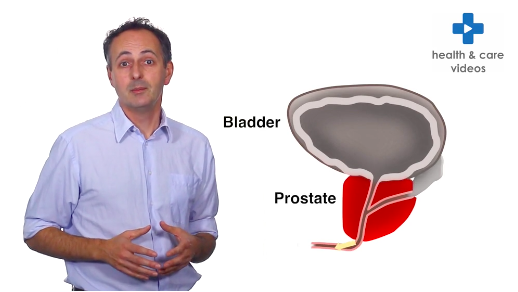NHS watchdogs have announced that a new nonsurgical treatment for enlarged
prostate will soon be available for men across the country.
This new procedure will reduce risks associated with general anaesthetic, surgery and long stays in hospital. It also means that men can avoid common side effects from surgery including loss of sexual function and fertility.
Experts hope that this new treatment for enlarged prostate will act as a bridge between drug therapy and surgery. In addition to this, it will relieve symptoms for thousands of men.
What is an enlarged prostate?
An enlarged prostate, also known as benign prostatic hyperplasia (BPH) is a common condition among men over 50.
Dr Nigel Hacking, who led a study into the effectiveness of the new treatment for enlarged prostate, said:
“Around half of men over the age of 50 will suffer from an enlarged prostate – and around half of them could benefit from treatment. By the time you get to the age of 80, around 80 per cent of men will suffer from this, so we are talking about a lot of men.”
In the short term, this condition reduces bladder capacity. Long term, it can cause urine infections as well as damage to the bladder and kidneys.
Drugs can control mild symptoms, but these often cause unwanted side effects like loss of libido.
Those with more serious symptoms tend to opt for a surgical procedure called a Transurethral Resection of Prostate (TURP).
This involves cutting away part of the prostate gland to reduce pressure on the bladder. This procedure also includes the use of general anaesthetic, several days in hospital and possible damage to sexual function and fertility.
Approximately 45,000 men a year undergo this procedure. To help them understand the TURP process, we created this video:
What is the new treatment for enlarged prostate?
The new technique is called a prostate artery embolisation (PAE) and is suitable for patients with non-cancerous enlargement of the prostate.
This non-invasive treatment for enlarged prostate can be done in one day, under local anaesthetic, so the patient doesn’t need to be admitted.
PAE involves injecting hundreds of tiny plastic beads into a blood vessel in the groin. This will block the blood supply and shrink the enlarged brand.
The new treatment for enlarged prostate was only available as part of research trials. However, the National Institute for Care and Excellence (Nice) has approved this treatment for routine use and hope that it will be available across the country within two years.
What are the benefits?
Estimates say that this new treatment for enlarged prostate glands will help tens of thousands of men and prevent them from having potentially life-altering surgery.
With this new procedure there is no need for general anaesthetic or a prolonged stay in hospital. This will significantly reduce the risks associated with treatment for enlarged prostate glands and, hopefully, lessen anxiety for patients.
This new procedure will also help the NHS save money. It will cost approximately £2,500 per patient, but will not require long hospital stays like the TURP procedure.
Professor Kevin Harris, clinical director from Nice’s interventional procedures programme, said the procedure could transform lives, particularly for those not suitable for current forms of treatment
“The advantage of this is you don’t need a general anaesthetic or a spinal anaesthetic. It means treatment is available for men who aren’t fit enough for surgery or for an anaesthetic, it means not having bits of your prostate chipped away, and the risk of bleeding and indeed the risk of an anaesthetic.
“The availability of this procedure could make a real difference to the lives of men up and down the country.”
Patients in the clinical trial are already seeing the benefits of this new procedure, and claim it helps them live life more confidently:
*Video courtesy of BBC News
We hope that both NHS and private healthcare organisations embrace this new treatment for enlarged prostate glands. It will relieve symptoms for thousands of men across the country, and be a much more cost-effective and timely solution for healthcare practitioners.

